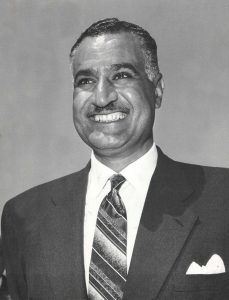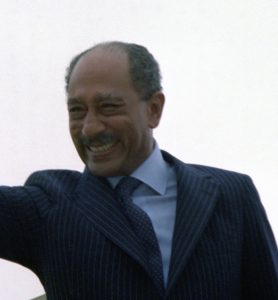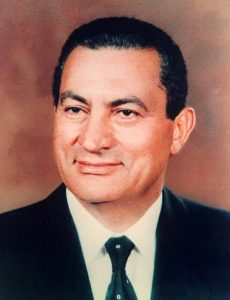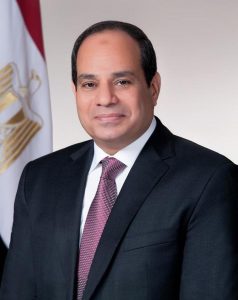When we first met Muhammad Ali, it was through the eyes of those closest to him—his wife Amina, the mother of his children, the quiet presence behind a man whose name would one day echo through the halls of Egyptian history. But to truly understand the man, we must step beyond the palace walls and out into the Egypt he reshaped with tireless energy, ambition, and ruthless resolve.
Muhammad Ali arrived in Egypt as an outsider—an Albanian soldier in an Ottoman uniform, sent to restore order after Napoleon’s retreat. By 1805, he had manoeuvred himself into power as Wāli (governor) of Egypt. But from the beginning, he ruled not as a caretaker of the Ottoman Empire’s will, but as a man with a vision all his own. In truth, he governed as a sovereign in everything but name—and he governed with a purpose: to build a state powerful enough to stand on its own.
His greatest achievement was in recognizing Egypt’s potential—and its vulnerability. He understood that without a modern army, a strong economy, and educated citizens, Egypt would forever be someone else’s prize. So he built.
He built an army—not of imported mercenaries, but of Egyptians, trained and drilled in the European manner. To fill its ranks, he controversially introduced conscription, drawing young men from the villages—a policy that caused hardship, yes, but also transformed Egypt’s military from a feeble provincial force into the most powerful in the Arab world. In 1815 Muhammad Ali became acquainted with Joseph Seve, later becoming known as “Suleiman Faransawi“, a man who would be instrumental in assisting Muhammad Ali to forge a new military machine for Egypt that would contribute to the establishment of a new ruling dynasty.
He built schools—not only for officers and engineers, but also for doctors, veterinarians, and civil servants. He sent missions abroad to France and Italy so that young Egyptians could return with new knowledge to modernize their homeland.
He built industries—factories for textiles, weapons, sugar, paper. He nationalized large swaths of land and reorganized agriculture, introducing cotton as a major cash crop that would dominate Egypt’s economy for generations.
He built infrastructure—a new irrigation system, canals, mills, and arsenals. Alexandria was reborn as a modern port; Cairo gained hospitals and new administrative institutions. He even restructured the bureaucracy itself, streamlining the collection of taxes and creating the bones of a centralized state.
He built power, and with it came expansion. Under his command, Egyptian forces conquered Sudan and challenged Ottoman and European dominance in the Levant. For a moment, it seemed Muhammad Ali might supplant the Ottoman Empire altogether. Though European pressure eventually forced him to retreat, the terms of the 1841 Convention of London secured Egypt’s hereditary rule for his descendants—a victory in its own right.
While Muhammad Ali’s reforms focused largely on the military, economy, and statecraft, his modernization efforts indirectly opened new paths for Egyptian women—though cautiously and within the bounds of his time. He established the first state-run girls’ school in 1832, aimed at training midwives and nurses, recognizing that women’s health was essential to a functioning modern society. Though small in scale, this marked a radical shift: the formal education of women under state supervision. His efforts to professionalize medicine and public health gradually created space for women to serve outside the home in medical roles. While he did not advocate for women’s liberation in the modern sense, Muhammad Ali laid the earliest groundwork for their public participation in a reformed Egypt—planting seeds that would blossom more fully in the generations to come.
Muhammad Ali did not merely strengthen Egypt; he made it a player on the global stage.
Yet for all the iron in his will and the stone he laid along the Nile, his legacy wasn’t just bricks and battles. It was the momentum he set in motion. His children and grandchildren—some reckless, some reformers—ruled Egypt for over a century, each walking paths he cleared. Isma’il Pasha, his grandson, would take the dream further, carving boulevards through Cairo, commissioning the Suez Canal, and dreaming of a Paris on the Nile. Even as colonial powers eventually tightened their grip, it was Muhammad Ali’s Egypt they coveted—not the feeble province he had inherited.
In his final years, the lion’s mind faltered. He died in 1849, not entirely aware of the empire he had carved from ambition and earth. But his Egypt endured. It bore his scars, wore his shape, and echoed his name down through time.
Muhammad Ali set a powerful precedent for those who would rule Egypt after him—not just his own descendants, but even leaders who came to power long after his dynasty ended. He established a tradition of building, of reshaping the nation not only through force, but through lasting works that elevated Egypt’s place in the world. His legacy was one of ambition turned into infrastructure, vision turned into institutions, and pride turned into nationhood. And though Egypt’s rulers have differed in background, politics, and ideology, nearly all followed the path he carved: each seeking to leave a tangible legacy for future generations—something that would outlast their time and secure their place in history.
Gamal Abdel Nasser redefined Egypt’s identity, leading the 1952 revolution that ended monarchy and colonial influence. He reclaimed ownership of the Suez Canal and nationalized it on July 26, 1956, taking control of the canal and its revenue. His legacy was one of pan-Arab nationalism, land reform, massive public sector expansion, and above all, the Aswan High Dam—a symbol of modernity and Egyptian control over its destiny.

Anwar Sadat shifted the country’s course with the 1973 October War, which restored national pride after the trauma of 1967. He signed the Camp David Accords, becoming the first Arab leader to make peace with Israel, and opened Egypt’s economy through the Infitah (economic liberalization) policy, laying the groundwork for future growth.

Hosni Mubarak, invested heavily in infrastructure, education, and telecommunications. His era saw expanded road networks, industrial zones, and urban development projects that connected remote areas to the capital and supported a growing middle class. He re-established political relations with the Soviet Union.

Abdel Fattah el-Sisi, Egypt’s current president, has embraced the same foundational ethos: his tenure marked by vast construction and development projects, including a new administrative capital, an expanded Suez Canal, and ambitious plans for energy independence and digital transformation.

Across centuries and regimes, one truth remains: the rulers of Egypt have continued to measure themselves by what they leave behind. In this, they all walk in the footsteps of Muhammad Ali—the man who first taught Egypt’s leaders that true power lies in building a future worthy of memory.

